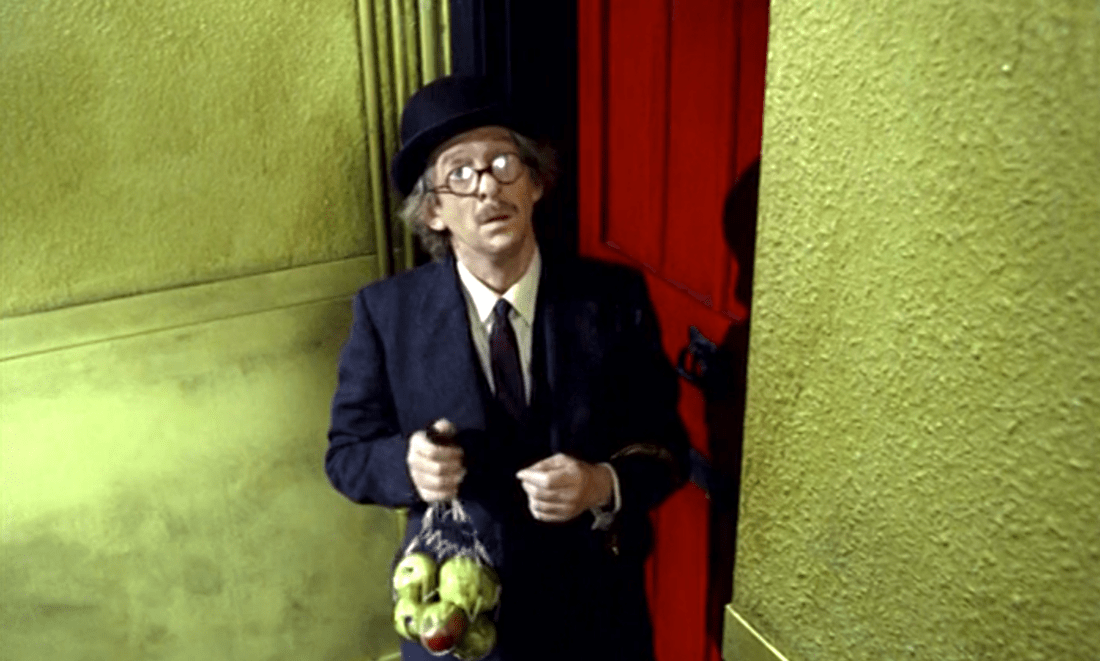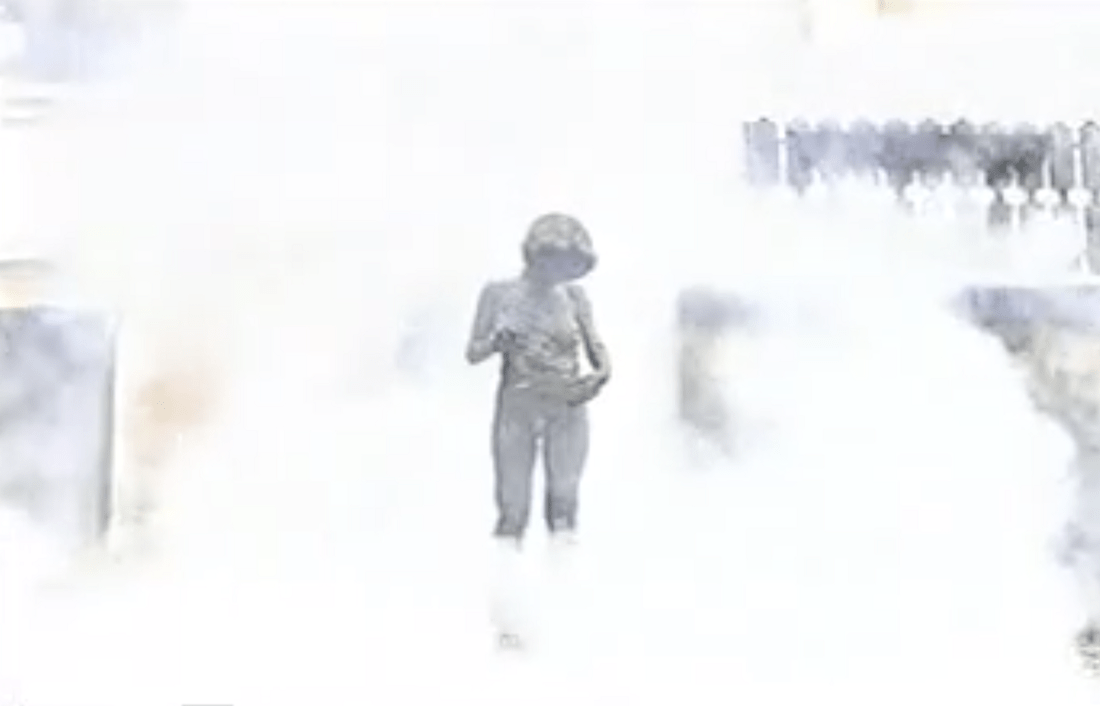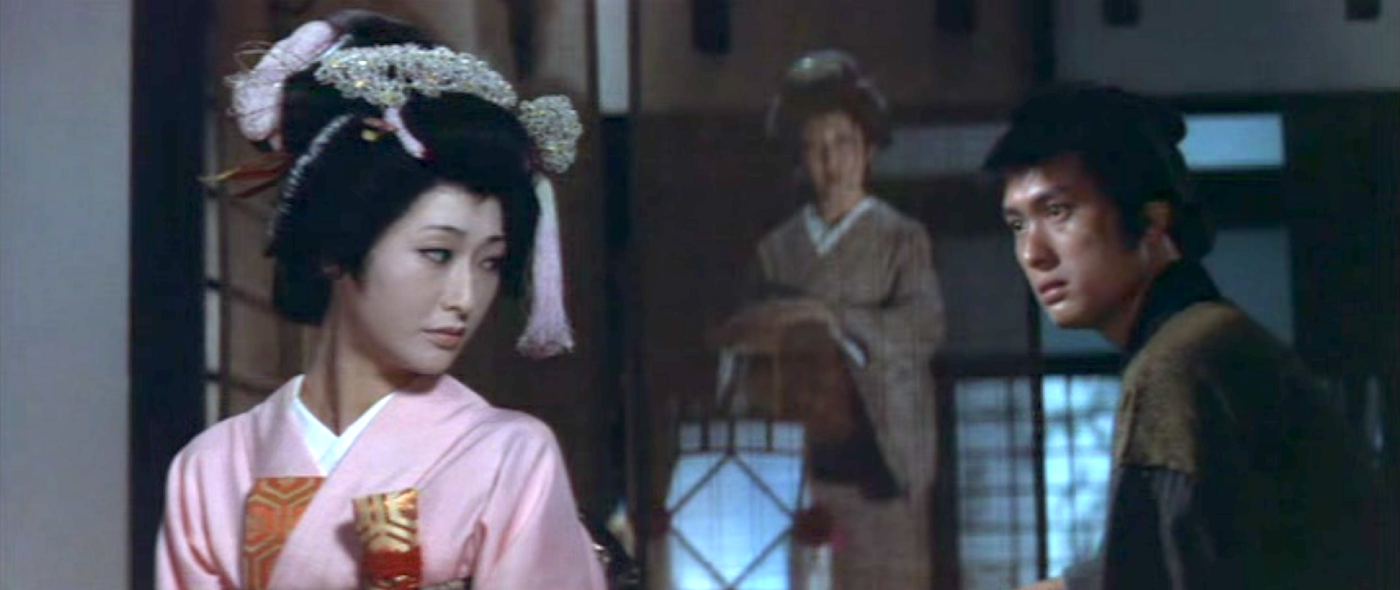
German director Wim Wenders made Paris Texas in 1984. He co-wrote the script with Sam Shepard. Paris Texas was Wender’s first “American” film and in preparation, he toured around the country as a kind of wandering observer. As a result, the film Paris Texas has a strong sense of place. You can see Wender’s interest and engagement in the scrubby desert where the movie is set. The scene this essay is concerned with takes place indoors, but still, the location plays a key role in how the drama unfolds.
Paris Texas is about intimacy. Our two main characters, Travis and Jane, were once married and deeply in love. Their love was turbulent and passionate and became increasingly destructive until it all reached a crisis and Travis ran off on foot into the desert. The film begins years later with Travis remerging from the desert to search out his long-lost love.
In many ways, Travis seems broken and defeated but he wants to find some way back into Jane’s life. His mysterious wanderings in the desert have left him foggy and confused. He seems unable to fully engage with the world around him, but his mission is enough to buoy him forward.
He finds Jane working in a peep show somewhere in Houston. Their first meeting is a delicately choreographed series of shots and reaction shots that take advantage of a two-way mirror placed between the two characters. Wenders carefully explores the relationship between what the characters are seeing and what they are saying.
It is very likely inspired or influenced by Bergman’s Persona where mirrors and reaction shots are used to blur the lines between the two characters. In Paris, Texas Wenders allows his characters to blend together but also uses the two-way mirror to isolate each character in a world where they can only see themselves. It all depends on which character has their light on and which is in the dark. The barrier between them constantly changes their visual relationship.
Regardless of its transparent or reflective state, the mirror is a barrier that keeps them from each other. It sets up a strong sense of longing and tension. These are two people who can not manage to reach each other.
Travis is tentative and anxious. He is afraid of screwing the whole thing up and so is unable to just come out and say everything he wants to say. This whole painful game is the result of his confusion and fear. Instead of revealing himself all at once, he tells Jane the story of their relationship as if it is a third-person narrative until she recognizes the story and deduces who the narrator is.

Throughout the telling of the story, Jane can only see herself in the mirror. She sees something that she sees all day every day, but as she listens, the sexy persona that she puts on for clients fades away and she sees herself.
From Travis’s side, he and we see Jane in a little room dressed up to look like a housewife in a homey kitchen somewhere in suburbia, but Jane doesn’t see that. She sees the mirror and the wall it is mounted to. The wall is unfinished and we can see the pink insulation and electrical wiring. It’s the seedy truth underneath the illusion.
Jane can imagine what Travis sees. She knows what he sees. They both bear witness to her having ended up in a strip joint. Travis sees the tawdry illusion a customer is meant to see, and Jane sees the shabby reality, but they both see through what the environment is meant to be. Their relationship transcends the present circumstances.
Wenders complicates matters by having Travis turn his back to the mirror. He is too overwhelmed to look at her and so turns the chair around while he recites the story. Jane doesn’t know he is turned away and so looks intently at the mirror to try and find him behind her own image.
This is also reminiscent of Bergman. A classic Bergman trope is to have one character turn their back to the other during a dialogue. One character turns away because he or she can not bear to hear what the other one is saying. You can see the arrangement in almost all of Bergman’s films.

The idea evoked by the Paris Texas arrangement is that we have trouble seeing others because we tend to see the world we believe in, the world we are familiar with. We tend to see ourselves.
There is a moment when Jane presses her face close to the glass in an effort to see Travis. She creates a shadow against the mirror which causes a kind of liminal space where Travis can not only see Jane but can also see a reflection of himself. Their two faces temporarily combine allowing them some kind of synchronous sympathy while still being separated.

Travis and Jane are struggling to see each other and their main obstacle is not the mirror but themselves. Both of them suffered when they were together and both of them are suffering now that they are apart. They are two flawed people unable to make their lives work.

Jane’s slow realization that it is Travis on the other side of the glass is heartbreaking. The story reunites them but the circumstances keep them apart. As the scene continues the story Travis is telling turns dark. Travis recounts how he drank too much and abused her and eventually it seems that she set their home on fire with him in it and then ran off.
As Travis tells the story they are both transported back to their relationship. Quiet, delicate music drifts into the scene. Ry Cooder was hired to write the soundtrack and for this scene, he plays a Mexican-inspired instrumental ballad that underlines the melancholy and nostalgia they are both wrapped in. They meet again in the mutual memory they have conjured.
Eventually, the tables turn and Jane turns away from the glass so she can narrate what happened to her after they parted. This is far from a redemptive reunion. They share their pain but still rely on the protection of the glass to reassure them. They don’t know if they are good for each other.

A romantic relationship is based on a shared narrative. The two parties collaborate on a story that informs how they found each other, and why they are together. It is an existential justification that brings their relationship meaning and depth. Part of breaking up is untangling the story and finding where the stories diverge.
Even as they try to reunite, the situation that Travis has set up with the mirror hurts them both. Near the end when they switch the lighting again Travis says “I can’t see you Jane.” When I first heard it I thought he meant he couldn’t start “seeing her” as in having a relationship with her. Of course, it could also simply be his complaining about the current problem of not being able to see her through the mirror, or It could also be referring to his not wanting to see her outside of the room face to face. Lastly, it could be that he is admitting to his own limited ability to see her for who she is.
Paris Texas is gritty and sad but it is not realism that Wenders is courting. The film is a poetic meditation on tenderness trapped inside something rough and broken. Travis and Jane’s love is destructive and they know it, but they also value the memories they share. The film does not provide an entirely happy ending but it rummages through the dust and rubble to find beauty in the wreckage. It may even be that they were never happy but they can construct a memory that allows them something comforting to carry with them while they try to move forward.

If you enjoyed this article you might also enjoy this - https://filmofileshideout.com/archives/the-body-remembers-when-the-world-broke-open-storytelling-in-real-time



